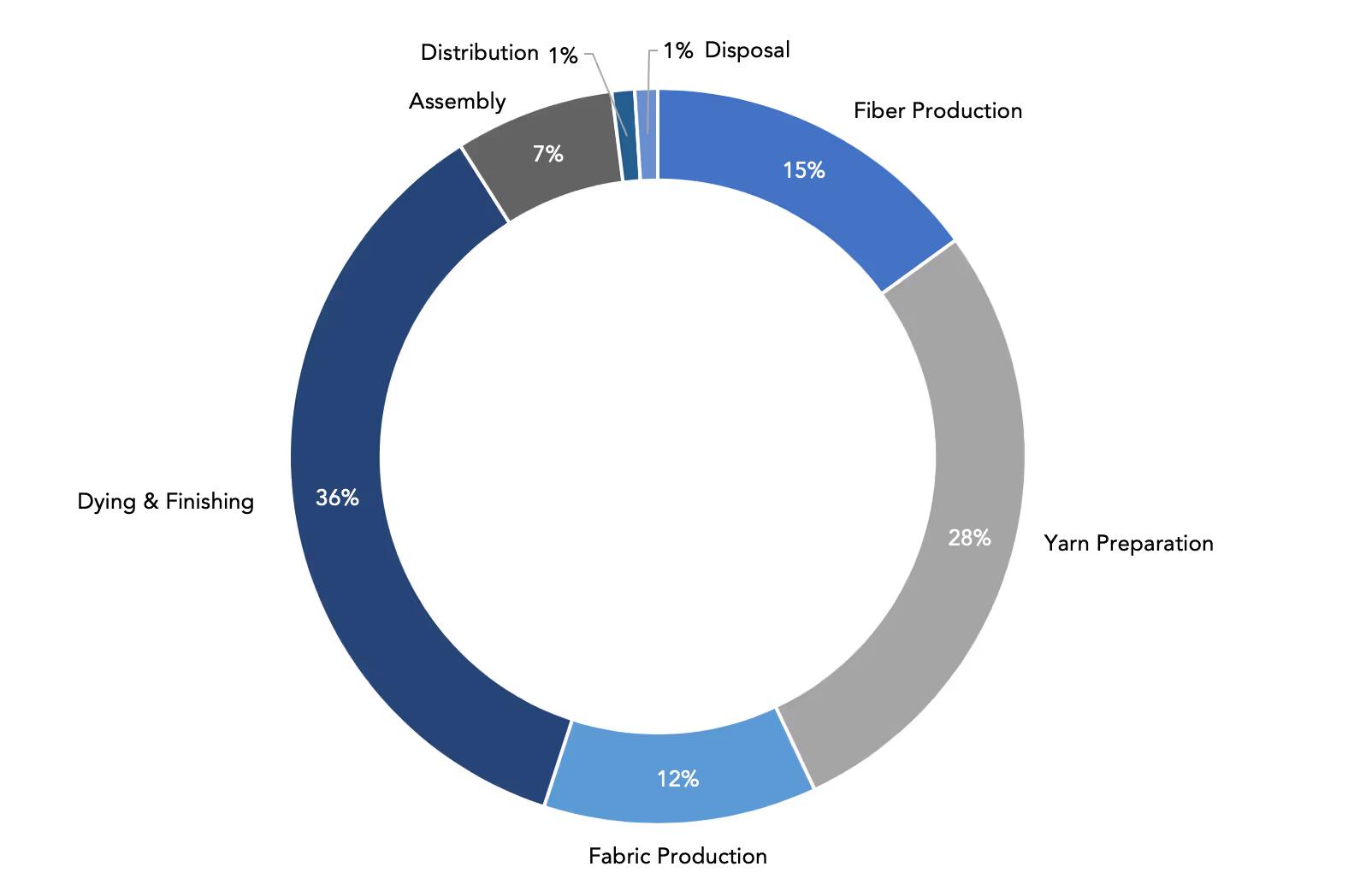Secondhand vs Rental: Which Clothes are Most Sustainable?

Join the community





The fashion industry is a surprisingly large contributor to global greenhouse gas emissions. With all the fossil fuels required for energy, materials, and transit, fashion accounts for an estimated 2-4% of global carbon emissions. Most of the emissions — 98% — come from production. While distribution’s impact on the planet is “negligible”, rapid delivery (via air) over standard shipping can increase the carbon impact of distribution by 35%.

Contribution of the apparel industry to climate change by value chain stage. Source: “Measuring Fashion.” Quantis International. 2018.
If you want to lower your personal fashion footprint, the best thing you can do is wear what you already have for as long as possible. The average American buys an item of clothing every week, and they're not wearing them for long, just 7-10 times. Of the 100 billion garments produced each year, 92 million tonnes end up in landfills.
But if you need to indulge in the occasional wardrobe update, what's the most sustainable way to do it? We did some calculations to help illustrate the impact of different fashion buying choices.
Shopping secondhand
Shopping secondhand will save you a lot of emissions, assuming you’re not buying more secondhand items than you would have bought new. The average American purchases five or more articles of clothing each month, amounting to a carbon impact of 360 kgs (or 794 lbs) CO2e per year. If those clothes are secondhand, you could save around $900 and 330 kg (728 lbs) of CO2e this year. That’s approximately equal to one round-trip flight from Boston to Washington, D.C.
Visit your local thrift store and search online secondhand sites like Depop or ThredUP to find clothes that are new-to-you. If you want to save even more money, go the free route by organizing a clothing swap with friends in your community to refresh your wardrobe without spending cash or contributing more CO2e emissions.
Emissions breakdown
- Clothing: 0 kg CO2e/ month (no new demand for clothes)
- Shipping: 2.5 kg CO2e/ month (assume purchasing one new item of clothing per month)
- Annual estimated footprint savings: 330kg (728 lbs) CO2e per year. The comparison is of 30 kg CO2e/year by buying one used item of clothing per month vs. 360 kg CO2e/year by buying five new articles of clothing per month.
- Annual estimated cost savings: $900/year. On average, secondhand clothing can be 50-70% cheaper than buying new clothes. The average American spends about $1,800/year on clothing and related services, making buying secondhand an opportunity to save upwards of $900 per year.
Buying fewer, higher-quality pieces
Investing in fewer, higher-quality pieces can save you $800 and 270 kg (595 lbs) of CO2e this year. That’s more than a roundtrip flight from Boston to NYC.
By purchasing fewer, higher-quality items, we can increase clothing utilization and reduce landfill, and still look good doing it. You can even find these high-quality pieces secondhand, lowering your clothing emissions even further. Dig through your local thrift store or try higher-end resale sites like The RealReal or Vestiaire Collective. You may even want to look into brands that invest in repairs for their clothes, so you can wear them for even longer.
When you buy clothing, consider how the pieces were made. Look for natural fibers, sustainably produced or organic items, and high-quality manufacturing to increase the longevity of wear.
Emissions breakdown
- Clothing: 5 kg CO2e/month (10 new pieces of high-quality clothing in a year)
- Shipping: 2.5 kg CO2e/month (assuming $10 shipping)
- Estimated footprint savings: 270 kg (595 lbs) CO2e/ year. Live lighter with a carbon footprint from clothing of 90 kg/year vs 360kg/year if you were to buy five new articles of clothing per month.
- Estimated cost savings: $800/ year. Assuming a high-quality item of clothing could cost up to $100, purchasing ten new items in a year would cost $1,000, versus spending $1,800 on 60 new items.
Renting clothes
This one gets a little tricky. In some situations, renting clothes is a more sustainable choice, but not always.
Renting is a great sustainable choice for an item that you're likely not going to wear more than a couple times. For example, a dress or suit for a wedding. But it's not better than finding those items secondhand. It can also be a strategic option if you're between sizes or styles and want to try lots of options before investing in your own high quality pieces or starting a secondhand closet update. Trying different styles could help you pick clothes to buy that you'll love for a long time.
Where renting clothes starts to become unsustainable if you're renting a lot of clothes each month. Especially if yo're renting more items than you would have otherwise bought. In short, renting should not be an excuse for overconsumption. If you normally buy one item of clothing a month, renting 10 items is not a more sustainable choice.
If you rent clothing, it's most sustainable to rent from an in-person or from a peer-to-peer service, rather than an online subscription model.
Emissions breakdown
- Clothing: 4 kg CO₂e/ month (four pieces/month * 6 kg CO₂e each / 6 uses per item)
- Shipping: 5 kg CO₂e/ month (2.5 kg x 2 to receive and return shipment, assuming $10 shipping)
- Cost savings compared to fast fashion: Produce only 108 kg (238 lbs) CO2e vs. 360kg if you were buying 5 new articles of clothing/ month.
- Cost savings compared to high-quality items: Produce an extra 18 kg (40 lbs) of CO₂e by renting rather than purchasing fewer, higher-quality pieces.
- Estimated cost savings: $720/ year. Rent the Runway’s monthly package costs about $90/month, or $1080/year. Compare to spending $1,800/ year on new clothes, the subscription model could make economic sense if you don’t buy much additional clothing.
Building a sustainable closet isn’t just about what comes in, but how you deal with the pieces going out. When it’s time to give your clothes a new home, follow our guide for getting rid of clothes responsibly.










.png)


